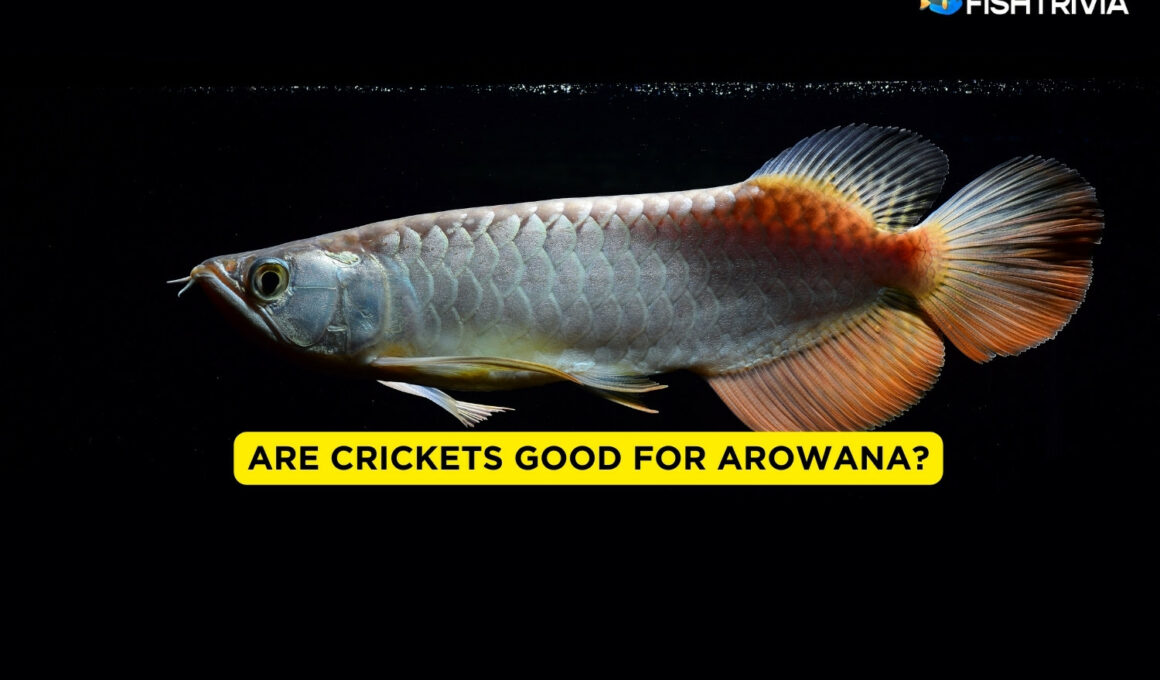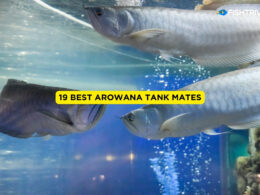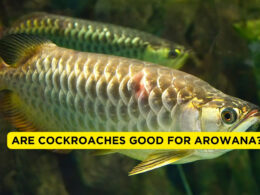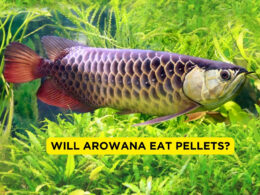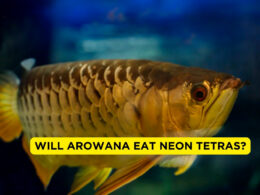In this article Show
Are crickets a suitable food choice for arowana fish? As an experienced aquarist, I understand the importance of proper nutrition for these magnificent creatures. Arowanas, known for their striking appearance and captivating behavior, are a prized species in aquariums around the world.
In this article, we’ll examine whether incorporating crickets into their diet is beneficial. We aim to provide clear, straightforward insights based on both scientific understanding and practical experience.
Whether you’re new to fish keeping or have been nurturing Arowanas for years, this discussion will offer valuable information to enhance the health and well-being of your aquatic pets.
Are Crickets Good For Arowana?
Yes, crickets can be a good dietary choice for Arowanas, offering a rich source of protein and essential nutrients that support their health and growth. Arowana owners often seek diverse, high-quality food options to mimic their natural diet, and crickets, being high in protein and easy to digest, fit well into this category.
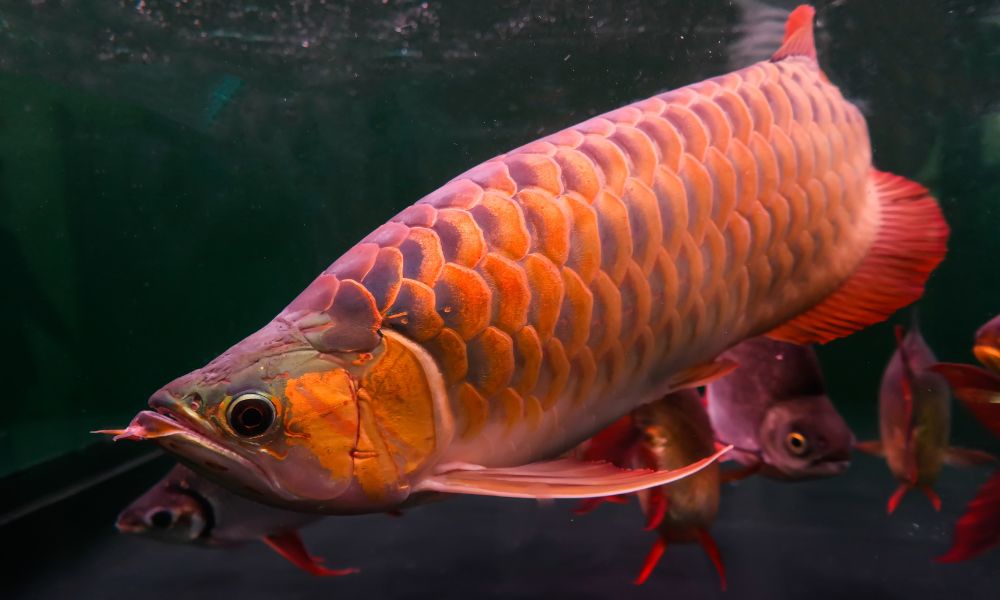
Benefits of Feeding Crickets to Arowanas
Feeding crickets to Arowanas offers several advantages that go beyond mere nutritional value. These benefits impact the arowanas’ overall health, growth, and behavior in a positive way.
1. Enhanced Diet Quality
Crickets add a crucial variety to the Arowana diet. This variety is key for Arowanas, who thrive on a diverse range of proteins. By incorporating crickets, which are a natural food source in their wild habitat, the diet of captive Arowanas becomes more aligned with their natural eating habits. This helps ensure they receive a more holistic range of nutrients.
2. Improved Health and Growth
The high protein content in crickets is essential for the growth and maintenance of muscle mass in Arowanas. Protein is a building block for growth, and its adequate provision is particularly important for younger, growing Arowanas.
3. Behavioral Benefits
Feeding crickets can stimulate the natural predatory behaviors of arowanas. In the wild, Arowanas are adept hunters, often leaping out of the water to catch insects. Providing live or suitably prepared crickets encourages these instinctual behaviors, leading to more active and engaged fish.
Considerations and Precautions
While crickets can be a beneficial addition to an Arowana’s diet, there are important considerations and precautions to keep in mind to ensure the health and safety of your fish.
1. Appropriate Size and Quantity
The size and quantity of crickets fed to Arowanas should be carefully considered based on the size of the fish. Smaller, juvenile Arowanas require smaller crickets to prevent choking hazards and to ensure easy digestion.
Larger Arowanas can handle bigger crickets. In terms of quantity, it’s crucial to avoid overfeeding. A good rule of thumb is to offer only as much as your Arowana can consume in a few minutes. This practice helps maintain a balanced diet and prevents issues like obesity and water pollution from uneaten food.
2. Potential Risks of Parasites and Disease
Like any live food, crickets can carry parasites and diseases that might harm your arowana. These risks underscore the importance of sourcing crickets from reliable, clean environments. Feeding wild-caught crickets is not recommended due to the high risk of contamination.
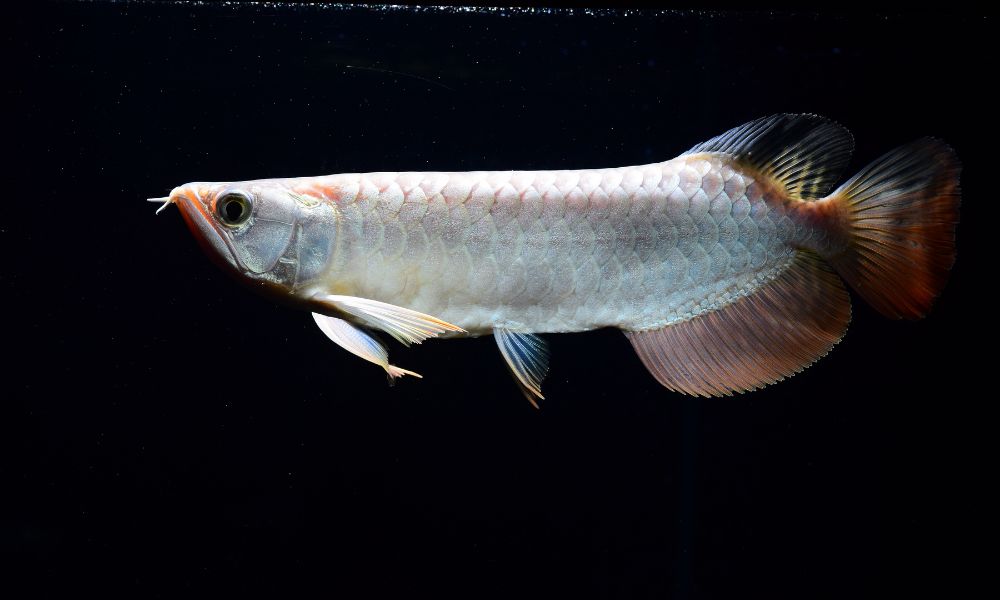
3. Importance of Reputable Suppliers
To mitigate the risks associated with parasites and disease, sourcing crickets from reputable suppliers is key. Reputable suppliers ensure their crickets are healthy, free from disease, and raised in a controlled environment.
They also provide information about the cricket’s diet, as what the crickets are fed ultimately impacts their nutritional value. Purchasing from trusted sources helps ensure the safety and quality of the crickets you feed to your Arowana.
Alternatives to Crickets
While crickets can be a nutritious addition to an Arowana’s diet, it’s important to provide a variety of food options to ensure a balanced and comprehensive nutritional intake. Here are some suitable alternatives to crickets that can be included in an Arowana’s diet:
1. Pellets and Flakes
Specially formulated pellets and flakes for carnivorous fish are excellent staple foods for Arowanas. These products are designed to meet all the nutritional needs of your fish, including proteins, fats, vitamins, and minerals. It’s important to choose high-quality brands that are specifically tailored for large, carnivorous species like Arowanas.
2. Frozen and Live Foods
Arowanas benefit from a mix of frozen and live foods, which can include bloodworms, brine shrimp, and small fish like guppies or goldfish. These foods mimic the natural diet of Arowanas and provide essential nutrients. However, care should be taken to source these from reputable suppliers to minimize the risk of disease.
3. Insects and Larvae
In addition to crickets, other insects and larvae, such as mealworms and earthworms, can be excellent food sources. These provide high protein content and encourage natural hunting behavior. Ensure they are appropriately sized for your Arowana to prevent choking hazards.
4. Fruits and Vegetables
Although Arowanas are primarily carnivorous, they can occasionally benefit from small amounts of fruits and vegetables, like peas, spinach, or zucchini. These can provide additional vitamins and fiber, contributing to digestive health. However, fruits and vegetables should only be a minor part of their diet.
5. Fish Fillets
Pieces of fresh or frozen fish fillets (e.g., salmon, tilapia) can be a nutritious part of the diet. Ensure that these are boneless and cut into appropriate sizes. This option is rich in proteins and omega-3 fatty acids, beneficial for the arowana’s health.
Balancing the diet of an Arowana with a variety of foods not only meets their nutritional needs but also keeps them interested and active. Variety helps prevent nutritional deficiencies and enhances the overall well-being of these majestic fish. Always remember to remove any uneaten food to maintain water quality and prevent health issues.






